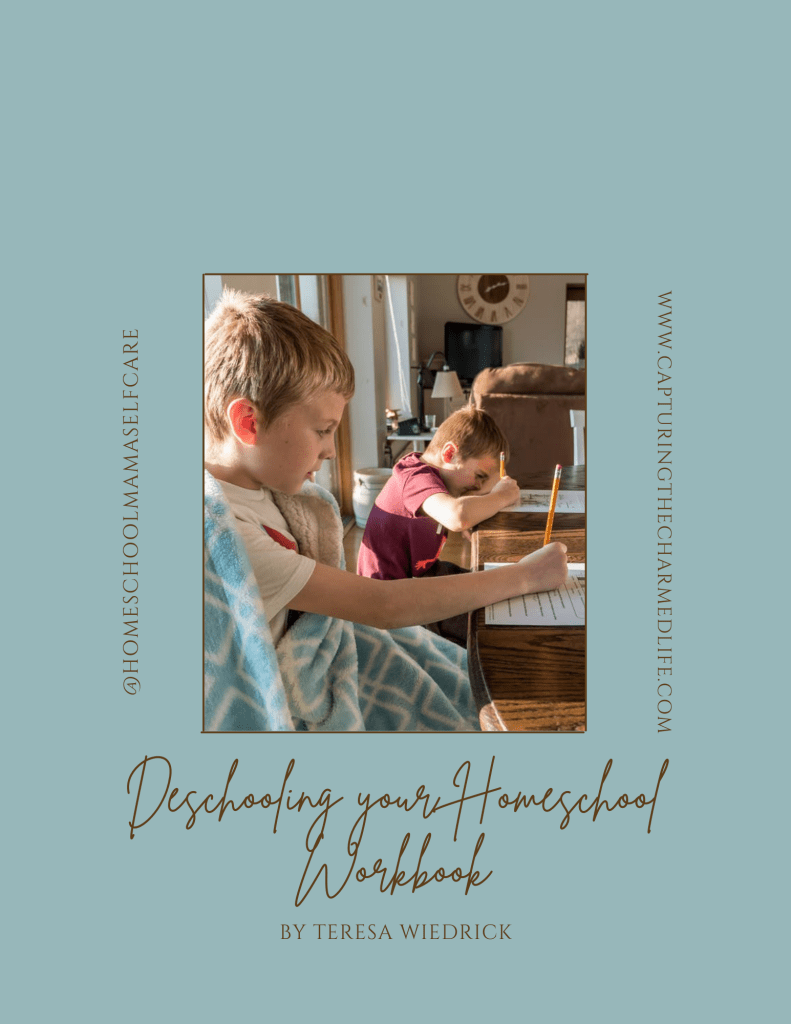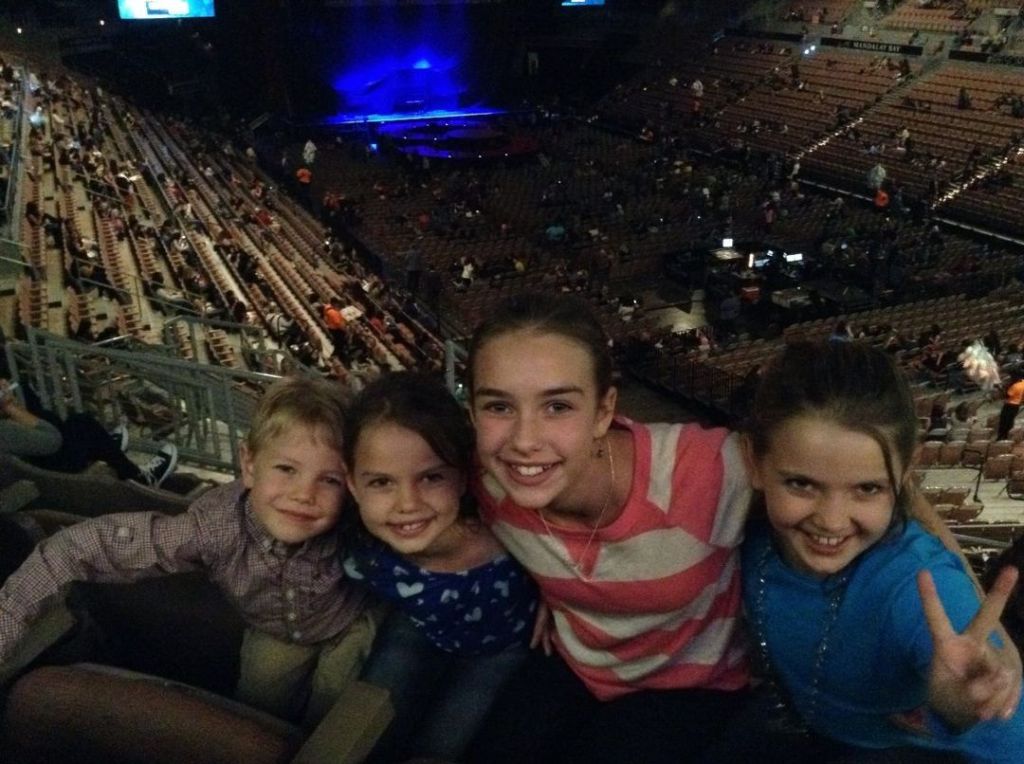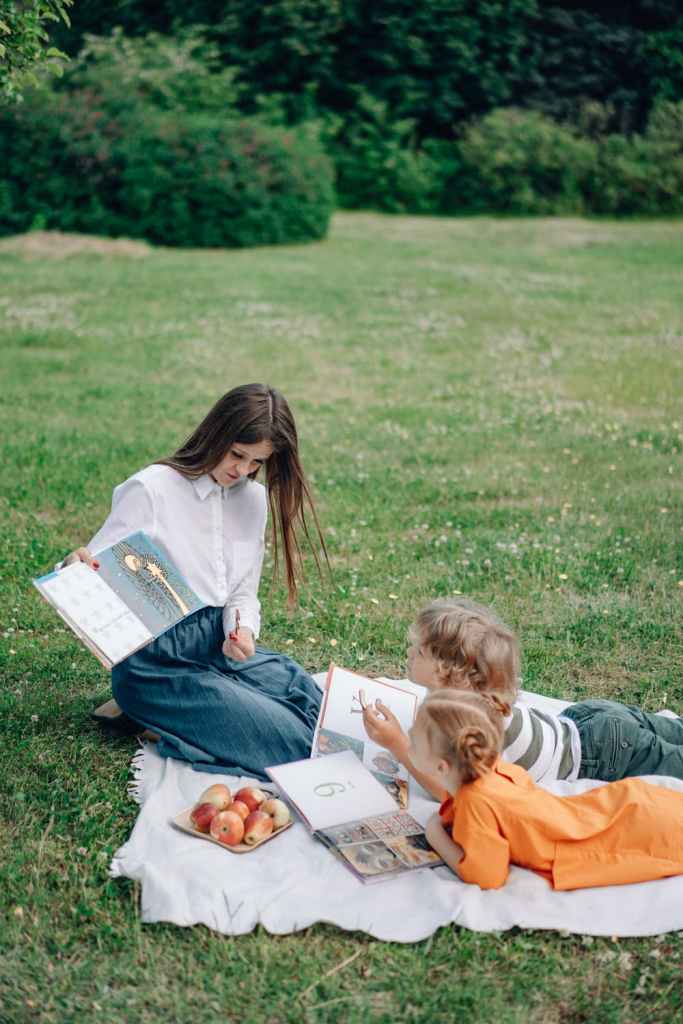I don’t have four kids homeschooling anymore. But for many years, I did.
I have four children. So how to homeschool more than one grade?
But my kids aren’t the same age, so how to homeschool more than one grade??
I have a teenager, finishing her final year of high school, who is very much as independent as a college student, waking herself early in morning online classes, tracking her study hours, watching her deadlines, and getting to town for her part-time job or numerous dance classes.
She has always excelled and loved her online science classes, eagerly listened to her physician dad’s medical stories, and even has a scalpel and surgical stitching set to practice. She’s a perfectionist, competitive with herself, now plans to head to a two-year ballet program in Toronto in a few months, and wonders if she’ll pursue a science degree afterward.
I have a just-turned-twenty-year-old who is finishing her second year at university. She is taking a double major in Psychology with Latin & Greek studies.
When she discovers her passions weren’t as she first thought, she pivots to her passions. She’s been a headstrong, independent soul since the day she graced this earth. She was independently backpacking Mexico before legal adulthood and found her way to the high school finish line a year earlier because she wanted to move on toward adulthood. She can be a workhorse, helpful in every way from the beginning, and always wanted to do everything her way.
I have a teenager who began school for the very first time since this last September.
She’s finishing her grade ten year. Until now, she preferred working on her pink bed in her pink room with her grey cuddly cat. She liked a consistent routine, one that she can work through at her own pace. She loves dressing up her bullet journal, her room, and her wardrobe. In her spare time, she’s very social, so social that she even has her own thriving YouTube channel. She aspires to be an actress and it would seem hard to see her in any other profession.
I have a twelve-year-old kiddo who is presently sitting behind me, taking a chess break with a Bear Paw snack, nestled in his blankets in front of an electric heater after he finishes his math practice.
He’s loving his catapults and crossbows science kit, reading voraciously, and practicing his cursive rewriting presidential quotes for a few minutes in the morning. He’ll read for hours without interruption: ancient Egyptian history, then how oil drills work, then researching goat husbandry. When he’s not on his formal homeschool day, he’s shooting bows and arrows in the backyard, building a treehouse, or gaming when he’s allowed.
Things in my homeschool look a whole lot different than they did once upon a time. Once upon a time, I had four kids in the same room.
I had an eight-month-old, a three-year-old, a six-year-old who just finished kindergarten, and an eight-year-old who finished grade 2 at a private school.
I had all these kids in the same room until my oldest child wanted to attend grade 10 at a local high school.

What I’ve learned about homeschooling multiple grades:
1. Grades don’t mean much.
I let the kids know what grades they’re in mostly to stave off fear for the general public.
(So, the general public isn’t worried that my children are illiterate and incapable of numerical calculations, even when my children happen to be correcting the cashier on their incorrect calculations, and roll their eyes, while the cashier is asking about their educational gaps).
2. Content is deliverable across the age spectrum.
Okay, I’ll grant you that math concepts are delivered at different times for differing aptitudes (but sometimes even at wildly different ages, the younger kids are capable of older kids’ concepts, cause math is math and it wasn’t designed for different grades. It’s just math).
But anything related to history, science, geography, reading, or games can be delivered to the eldest and to the youngest, no matter the age gap.
3. Comprehension is based on the specific child, not on the grade the child is designated.
The process is the same as the explanation you give each of your children when they attend an art gallery or museum together.
You’re at the museum: not every child cares to be there.
- One of them pays attention to the paint strokes.
- One of them is just happy to dress up to do an art gallery visit in style.
- Another child is interested in the security guard’s uniform and whether he’ll take her to jail if she touches the painting (she’s six, so probably not).
- One of them might be there because he’s too young to stay at home alone.
They have different interests in the content. Some of them love it so they ask more questions.
Some of them just nod their heads blankly. Some of them tell you about something even you didn’t know because they’ve been learning about it outside beyond your presence. Some of them don’t ask anything, hoping to get through the museum already so they can go get a smoothie from the cafeteria.
4. They’re all different, so they each ask you different questions, they each understand things differently, so you should answer their questions as each of them asks. (It’s how they learn).
If you’re looking for a history program you can share together, check out Sonlight or Book Shark.
Or you could choose any history book and read it together.
- Let them ask questions as often as you can handle interruptions,
- Locate the geographical location on a map,
- Find out what else is happening during that time period around the world,
- If the kids have a special interest in how they lived, find out more about that,
- If they’re especially interested in war, then find out more about those details,
- Or do they have an interest in building things? Search out architecture in that era and place.
- If they like to write, ask them to write a couple of paragraph summary, a fictional narrative of a family who lived through that time period, and create a pretend newspaper of that place.
5. Whatever their interest: incorporate that.
If you’re looking for a geography book for three levels of comprehension? We’ve been using Trail Guide to Geography and enjoying the quiz-style random trivia questions.
Or if you’re just looking to read books together, watch documentaries, or have field trips, you can do that together too.
6. Aptitude isn’t determined by age.
Mental math appeared easiest to our two youngest children.
Though math concepts are taught individually, they can be reinforced collectively.
- Word problems,
- Logic games,
- Card games,
- Board games,
- Minute-to-win-it games.
All these are mental math games that are useful and easily accomplished in a game approach across the age spectrum.
Reading abilities developed at similar ages in our family. I find it interesting that the child that learned to read at the youngest age now prefers it the least and is our slowest reader. Go figure.
7. One of our girls loved history, read all day long, knows the intricacies of the British monarchy, and had no interest in my interest in teaching them Latin.
In fact, she didn’t really like learning anything prescribed by anyone (neither me as a homeschool mom nor her high school teachers later). She decided to pursue Latin language study at University and Greek history as one of her University majors. (My twelve-year-old’s interest in ancient history propels him and his oldest sister to have chats about what they’ve learned still.)
Obviously, writing levels are naturally different across the age spectrum, but incorporating the same writing prompts, or projects doesn’t have to be different. For years, no matter the writing prompt, my third daughter wrote everything in sales copy. No matter her story, essay, or journal entry, I felt as though she was selling me something.
She decorated her stories with verve and pizzazz.
So for a Thanksgiving writing prompt one year, my thirteen-year-old sold me Thanksgiving, my fifteen-year-old shared her writing an existential narrative titled “Who Am I?” and my nine-year-old shared his favourite traditions of Thanksgiving.
To each their own. All different. But it was about the same topic.
8. Communal reading time is easy to incorporate across the age spectrum.
I am a homeschooling mama first, and a professional reader second, ha, so I have always found a way to read a LOT of books.
I had a bookless childhood. So I am now caught up on children’s literature, though it took me my adulthood to do it.
I love love love reading. (Hence, the Homeschool Mama Book Club).
There couldn’t be a better way to gain an education than to read read read. And I know it personally.
9. For years, our young homeschool family read in the afternoon for history and we read in the evening for our bedtime routine, but now we read in the morning, after breakfast.
We have read so many books. Here are a few of our favourites.
But I’ve got five overflowing bookshelves that I am challenged to part with.
- Each book represents a different stage of our family.
- Each book represents a memory.
- Many of the books we’ve read are associated with specific places we’ve lived or traveled to (because we traveled for seven years of our homeschool).
Though my teenagers are less interested in readalouds these days, I try squeezing it in anywhere I can.
And sometimes they sit with my twelve-year-old son now, as I only read to him, just to hear what we’re reading. I recently finished The Evolution of Calpurnia Tate with my youngest (but the older two girls often hear snippets as I read).
If I can promise massage exchanges before bed, I can even read with my teenagers.
This is my favourite reason to homeschool.
10. Communal community time.
Until a certain age, about adolescence, family field trips and family playdates easily happened en masse.
An eight-year-old led the dress-up time with toddlers, preschoolers, and similar-age mates. So many times I heard: “Your kids play so well with younger kids.” (Because they’re used to hanging out with families, not segregated groups of same-aged peers, and they’re used to hanging out with younger siblings).
When they’re young, any activity can be a family activity.
- you can join together to help at a summer BBQ at the seniors center,
- you can visit a new homeschooling family of younger kids,
- you can lead local field trips.
11. You name the activity, you can do it as a family.
(And you can do it when they’re older too because they’re accustomed to doing it with you (but they sometimes have their own plans at that age too).
Ultimately, homeschooling four different grades mean you’re really just engaging four different people, with four different developmental stages, and four different interests & aptitudes.
So the grades? They don’t mean anything.

Deschool your Homeschool Journaling Workbook
Deschool your homeschool journaling workbook that aids in your self-exploration, to get clear on how you can bring freedom & individualization into your homeschool.
People also ask:
- Structuring a Homeschool for Four Kids in our Sixth Year
- How to Teach Kids to Read: A Tale of Teaching My Four Homeschool Kids to Read
- remembering our homeschool freedoms: don’t forget the gift in your child
- How do I create a charmed homeschool?
- Do you do one-on-one coaching?






I used to homeschool too. This is the first year in 14 years that I don’t have anyone here at home with me. It’s very strange and some days I’m not quite sure what to do with myself. 😉
Wow. That must be quite an adjustment. I feel like I’m getting a few evenings that feel like that too, and it is weird. Have you increased your writing activities?
It really is… and no I haven’t really increased my writing. I’m taking classes online full-time, so I’m just as busy as ever with all of that.
Love this! I have 7 and we used to homeschool as well. I miss it a lot. I did a lot of what you discussed… especially with the grade levels 😂. Thank you for sharing!